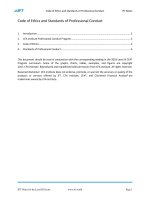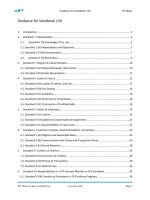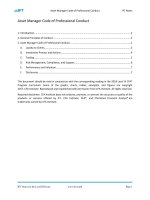CFA 2018 level 3 schweser practice exam CFA 2018 level 3 question bank CFA 2018 r29 risk management applications of options strategies summary
Bạn đang xem bản rút gọn của tài liệu. Xem và tải ngay bản đầy đủ của tài liệu tại đây (474.37 KB, 17 trang )
���������������������������������������������������������������������������������������������������������������������������������������������������������������������������������������������������������������������������������������������������������������������������������������������������������������������������������������������������������������������������������������������������������������������������������������������������������������������������������������������������������������������������������������������������������������������������������������������������������������������������������������������������������������������������������������������������������������������������������������������������������������������������������������������������������������������������������������������������������������������������������������������������������������������������������������������������������������������������������������������������������������������������������������������������������������������������������������������������������������������������������������������������������������������������������������������������������������������������������������������������������������������������������������������������������������������������������������������������������������������������������������������������������������������������������������������������������������������������������������������������������������������������������������������������������������������������������������������������������������������������������������������������������������������������������������������������������������������������������������������������������������������������������������������������������������������������������������������������������������������������������������������������������������������������������������������������������������������������������������������������������������������������������������������������������������������������������������������������������������������������������������������������������������������������������������������������������������������������������������������������������������������������������������������������������������������������������������������������������������������������������������������������������������������������������������������������������������������������������������������������������������������������������������������������������������������������������������������������������������������������������������������������������������������������������������������������������������������������������������������������������������������������������������������������������������������������������������������������������������������������������������������������������������������������������������������������������������������������������������������������������������������������������������������������������������������������������������������������������������������������������������������������������������������������������������������������������������������������������������������������������������������������������������������������������������������������������������������������������������������������������������������������������������������������������������������������������������������������������������������������������������������������������������������������������������������������������������������������������������������������������������������������������������������������������������������������������������������������������������������������������������������������������������������������������������������������������������������������������������������������������������������������������������������������������������������������������������������������������������������������������������������������������������������������������������������������������������������������������������������������������������������������������������������������������������������������������������������������������������������������������������� fair option prices.
“Boxing-in” your profit!
6
Strategy
Comment
Covered Call
Profit Calculation
Underlying+ short call
Lowers risk by providing a cushion
Protective Put Underling + long put
Puts a floor on losses
Bull Spread
Long call (X1) + short call (X2)
Make money if underlying goes up
Bear Spread
Long put (X2) + short put (X1)
Make money if underlying goes down
Butterfly
Combine bull and bear, using three exercise prices
Make money if underlying is stable
VT – S0 + c0
Collar
Pay for put by selling call
Limits down side risk… but also cap upside
VT – S0
Straddle
Buy put and call with same X and same expiration
Make money if underlying is volatile
VT – (c0 + p0)
Box
Combine bull and bear, using two exercise prices
Exploit arbitrage opportunity if both BSM and Binomial do
not hold
X2 – X1 – (c1 – c2 + p2 – p1)
VT – S0 – p0
VT – c1 + c2
VT – p2 + p1
VT – c1 + 2c2 – c3
7
Interest Rate Options
Underlying is an interest rate and the exercise price is expressed in terms of a rate.
A call option will make money if the option expires with the underlying interest rate above the
exercise rate. Interest rate call option payoff:
NP)max(0, Rate at expiration − Exercise rate)((Days in underlying rate ) 360
A put option will make money if the option expires with the underlying interest rate below the exercise rate.
Interest rate put option payoff:
NP)max(0, Exercise rate − Rate at expiration)((Days in underlying rate ) 360
8
Effective Interest Rate Using Call Options
Loan amount
Underlying
Spread
Current Libor
Expiration
Exercise rate
Call premium
Today’s date
$40,000,000
180-day Libor
200 basis points over Libor
5.5 percent
20 August (128 days later)
5 percent
$100,000
14 April
For Libor of 8 percent, the payoff is
$40,000,000𝑚𝑎𝑥(0,0.08 − 0.05)
180
= $600,000
360
The compounded premium is:
$100,000 1 + (0.055 + 0.02)
128
360
= $102,667
The effective loan proceeds are $40,000,000 – $102,667 = $39,897,333
The loan interest is: $40,000,000(0.08 + 0.02)(180/360) = $2,000,000
The effective interest rate is:
$40,000,000 + $2,000,000 − $600,000
$39,897,333
365 180
− 1 = 0.0779
9
Effective Interest Rate Using Put Options
Loan amount
Underlying
Spread
Current Libor
Expiration
Exercise rate
Put premium
$50,000,000
90-day Libor
250 basis points over Libor
7.25 percent
1 May (in 47 days)
7 percent
$62,500
For Libor of 6 percent, the payoff is:
$50,000,000max (0, 0.07−0.060) (90/360) =$125,000
The compounded premium is:
$62,500[1+ (0.0725+0.025) (47/360)] = $63,296
Put costs $62,500 on 15 March, which is equivalent to $63,296 on 1 May. The effective amount loaned is
$50,000,000 + $63,296 = $50,063,296.
With Libor at 6 percent, the interest is: $50,000,000[(0.06+0.025)(90/360)] = $1,062,500
The loan interest plus the put payoff is the effective interest on the loan. The effective rate on the loan is:
$50,000,000 + $1,062,500 + $125,000
$50,063,296
365 90
− 1 = 0.0942
10
Interest Rate Caps
A floating rate loan requires periodic interest
payments in which the rate is reset on a regularly
scheduled basis. A cap is a combination of interest
rate call options designed to align with rates on a
loan. Each component is called a caplet. It
provides protection against rising interest rates
over the life of the loan.
Date
15 April
15 October
15 April
15 October
15 April
15 October
15 April
Libor
0.0900
0.0850
0.0725
0.0700
0.0690
0.0875
Loan amount
Underlying
Spread
Current Libor
Interest based on
Component caplets
Exercise rate
Cap premium
$10,000,000
180-day Libor
100 basis points over Libor
9 percent
actual days/360
five caplets expiring 15 October, 15 April, …
8 percent
$75,000
Loan Rate
0.1000
0.0950
0.0825
0.0800
0.0790
0.0975
11
Interest Rate Caps
A floating rate loan requires periodic interest
payments in which the rate is reset on regularly
scheduled basis. A cap is a combination of interest
rate call options designed to align with rates on a
loan. Each component is called a caplet. It
provides protection against rising interest rates
over the life of the loan.
Date
15 April
15 October
15 April
15 October
15 April
15 October
15 April
Libor
0.0900
0.0850
0.0725
0.0700
0.0690
0.0875
Loan Rate
0.1000
0.0950
0.0825
0.0800
0.0790
0.0975
Loan amount
Underlying
Spread
Current Libor
Interest based on
Component caplets
Exercise rate
Cap premium
$10,000,000
180-day Libor
100 basis points over Libor
9 percent
actual days/360
five caplets expiring 15 October, 15 April, …
8 percent
$75,000
Days in Period Interest Due Caplet Payoffs
Effective Interest
183
182
183
182
183
182
$508,333
455,000
419,375
404,444
401,583
455,000
$508,333
480,278
419,375
404,444
401,583
492,917
$25,278
0
0
0
37,917
12
Interest Rate Floor
An interest rate floor is a series of interest
rate put options that expire on various
interest rate reset dates. Each component is
called a floorlet. It provides protection to
the lender against falling interest rates.
Date
15 April
15 October
15 April
15 October
15 April
15 October
15 April
Libor
0.0900
0.0850
0.0725
0.0700
0.0690
0.0875
Loan Rate
0.1000
0.0950
0.0825
0.0800
0.0790
0.0975
Loan amount
Underlying
Spread
Current Libor
Interest based on
Component floorlets
Exercise rate
Floor premium
$10,000,000
180-day Libor
100 basis points over Libor
9 percent
actual days/360
five floorlets expiring 15 October, 15 April, etc.
8 percent
$72,500
Days in Period
Interest Due
183
182
183
182
183
182
$508,333
480,278
419,375
404,444
401,583
492,917
Floorlet Payoffs
Effective Interest
$0
38,125
50,556
55,917
0
$508,333
480,278
457,500
455,000
457,500
492,917
13
Interest Rate Collar
A collar combines a long position in a cap with a short
position in a floor. The sale of a floor provides a
premium that can be used to offset the purchase of a
cap. In this strategy, the borrower pays for the cap by
giving away some of the gains from the possibility of
falling interest rates. A collar establishes a range. Any
rate increases above the cap exercise rate will have no
net effect, and any rate decreases below the floor
exercise rate will have no net effect.
Date
Libor
Loan Rate
15 April
0.0900
0.1000
15 October
0.0850
15 April
Loan amount
Underlying
Spread
Current Libor
Interest based on
Component options
Exercise rate
Premium
$10,000,000
180-day Libor
100 basis points over Libor
9 percent
actual days/360
five caplets and floorlets expiring
15 October, 15 April, etc.
8.625 percent on cap, 7.5 percent on floor
no net premium
Days in Period
Interest Due
0.0950
183
$508,333
0.0725
0.0825
182
480,278
$0
$0
480,278
15 October
0.0700
0.0800
183
419,375
0
–12,708
432,083
15 April
0.0690
0.0790
182
404,444
0
–25,278
429,722
15 October
0.0875
0.0975
183
401,583
0
–30,500
432,083
182
492,917
6,319
0
486,598
15 April
Caplet Payoffs
Floorlet Payoffs
Effective Interest
$508,333
14
Strategy
Comment
Interest Rate Calls with Borrowing
Used by a borrower. Establishes a maximum rate
for a loan to be taken out in future.
Interest Rate Puts with Lending
Used by a lender. Establishes a minimum rate for a
loan to be given out in future.
Interest Rate Cap with Floating Rate Loan
Used by a borrower. It provides protection against
rising interest rates over the life of the loan.
Interest Rate Floor with Floating Rate Loan
Used by a lender. It provides protection against
falling interest rates.
Interest Rate Collar with Floating Rate Loan
Used by a borrower. It establishes a range, if
interest rates move beyond this range it will have
no net effect on the borrower.
15
Delta Hedging
Delta =
Change in option price
Change in underlying price
To delta hedge a call option position, the number of shares to purchase can be found using the
following equation:
𝑁𝑐
1
=−
𝑁𝑆
∆𝑐 ∆𝑆
Delta changes with price. Hence we need to change position when underlying price changes.
Delta also changes with the passage of time. Hence we need to adjust the delta hedge as expiration
approaches.
16
Gamma
Gamma measures sensitivity of delta to change in underlying.
Gamma =
Change in delta
Change in underlying price
High gamma means that the delta changes a lot for a given change in underlying. This creates a problem
for delta hedgers.
Gamma is relatively high for at the money options.
Gamma is highest near expiration for at the money options.
17









